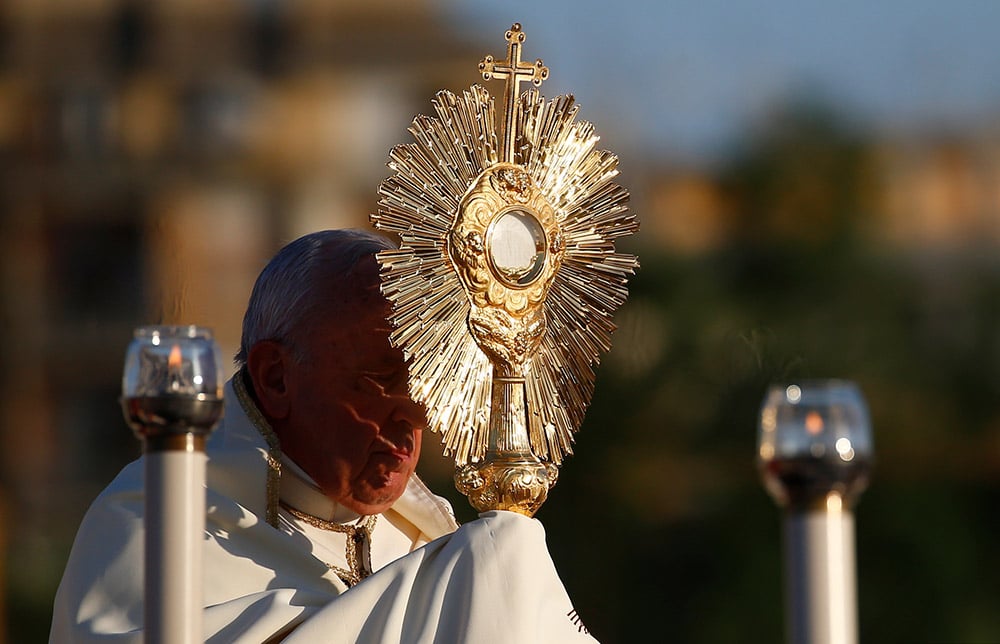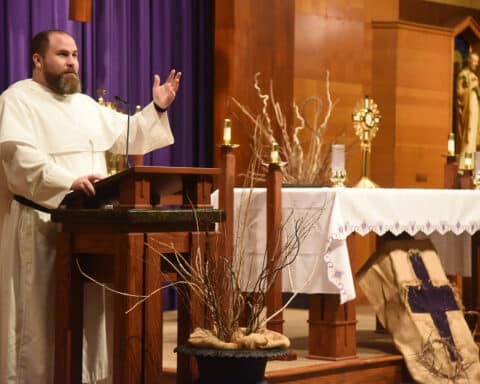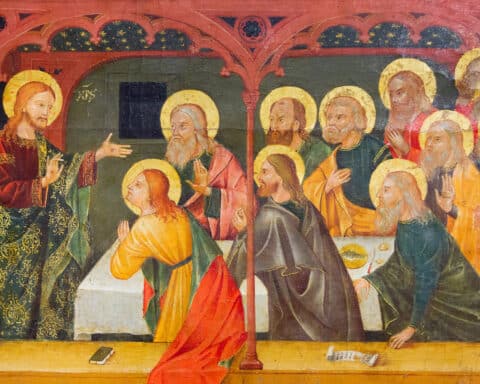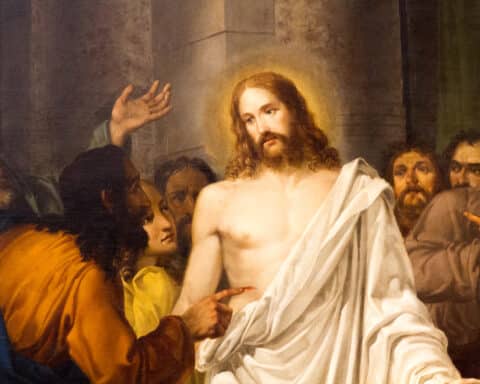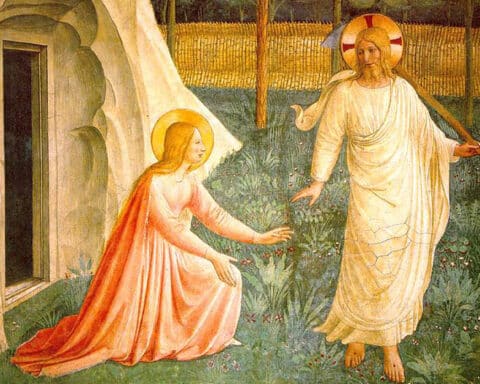
Each time this report is released, the same solutions are brought forward. Groups concerned about the report call for better Eucharistic catechesis. If only people knew the doctrine of Real Presence, understood what transubstantiation is, then they would believe.
| June 14 – Solemnity of the Body and Blood of Christ |
|---|
|
Dt 8:2-3, 14-16
Ps 147:12-13, 14-15, 19-20
1 Cor 10:16-17
Jn 6:51-58
|
Others use this report as an occasion to argue that transubstantiation is an antiquated way of explaining Real Presence, too dependent on Aristotle. They contend that maybe symbolism is in fact a better way of explaining Eucharistic presence for our day.
The solemnity of the Body and Blood of Christ is a challenge for those who hold either of these views. Both sides are in danger of erasing the salutary difficulty of the Church’s Eucharistic teaching.
In each of the Gospels, Jesus feeds the multitude with a paltry supply of loaves and fishes. But in John, Our Lord engages in an explication of what he has done.
Our fathers may have eaten manna in the desert, but Jesus is the bread of life come down from heaven. When we believe in him, becoming obedient to his word, we enjoy this feast of wisdom.
Jesus does not stop there. We are to eat his flesh, to drink his blood. Through this eating and drinking, we receive new life.
This was a hard teaching. Disciples left in droves, unable to stomach Jesus’ words.
This is a hard teaching.
The sequence for Corpus Christi, composed by St. Thomas Aquinas, poetically deals with this difficulty. God has fed his people with manna in the desert, with wisdom from on high. And on the night of the Last Supper, Jesus shares a sacrificial meal with his disciples. He enacts a new covenant of love unto the end.
What he gives in this feast is his body and his blood.
The transformation of bread and wine into body and blood must be understood aright. It is not cannibalism. The risen Lord is not trapped in bread. Rather, the very substance (the “is-ness” of bread and wine) is transformed. Bread becomes Christ’s body entirely. Wine becomes Christ’s blood wholly.
And yet, the “signs” of bread and wine remain. Christ’s body tastes, smells and feels like bread, feeding us with the finest wheat. His blood tastes like wine, inebriating the heart.
This change is not perceivable. And that is the wonder of the Eucharist. God feeds us, bestows divine life to us, in a way that we can receive it.
This is transubstantiation. In one sense, it is not that hard to understand. You do not need a doctoral degree in theology or philosophy.
On the other, it is the hardest of teachings. Understanding Real Presence is not yet belief. One must bend the knee before the Blessed Sacrament, to adore the living God, and let divine charity pierce your heart.
If we have forgotten to teach the doctrine of Real Presence, it is not only a matter of proper instruction. Instead, it is because we have forgotten Eucharistic reverence in our churches, making the Eucharist something easy, rather than hard.
So, this Corpus Christi, bow down in adoration before the God who feeds us this day with his very life. We do not eat him. He eats us, taking us into the bleeding, wounded heart of God.
Timothy P. O’Malley, Ph.D., is the director of education at the McGrath Institute for Church Life at the University of Notre Dame.

